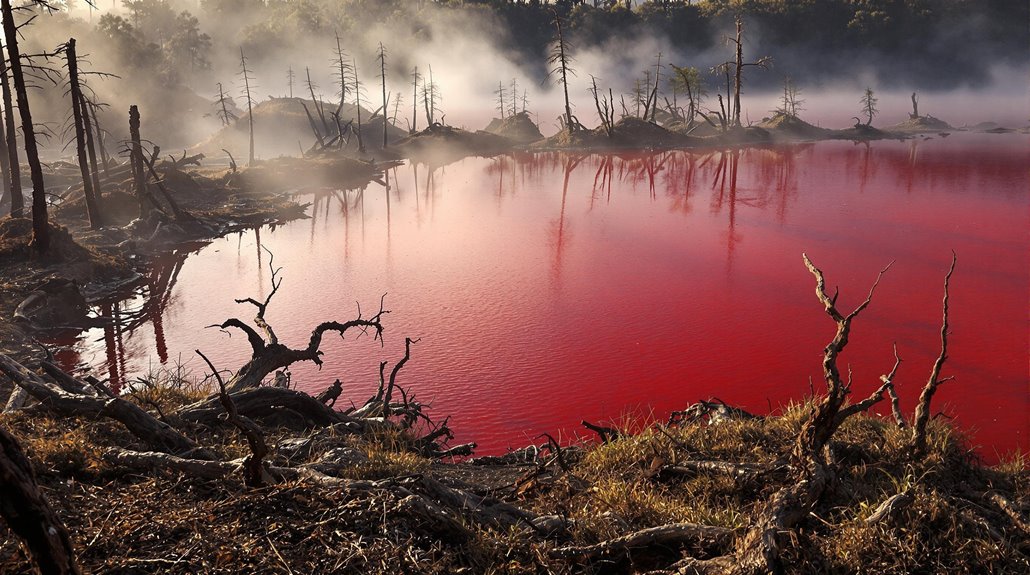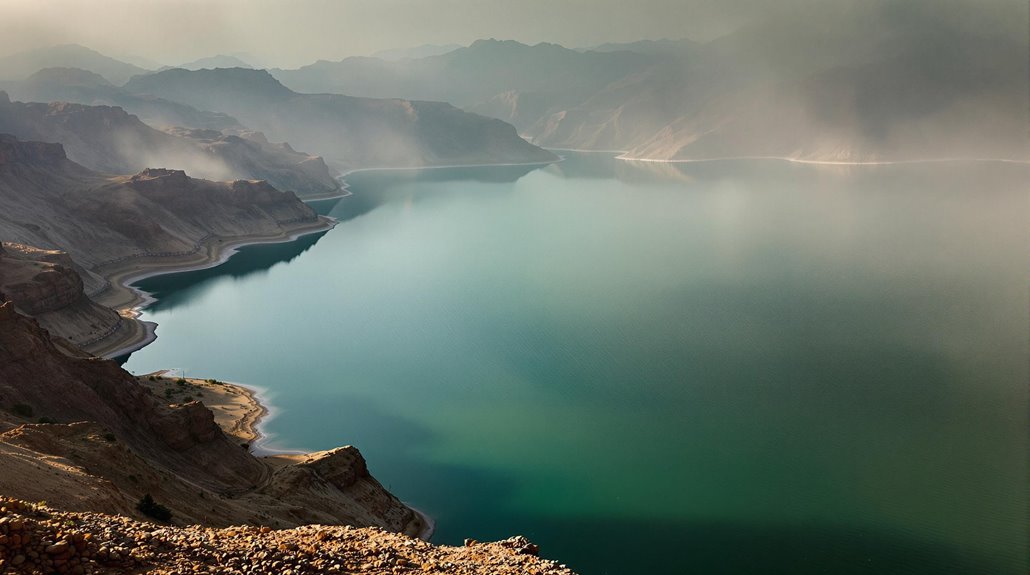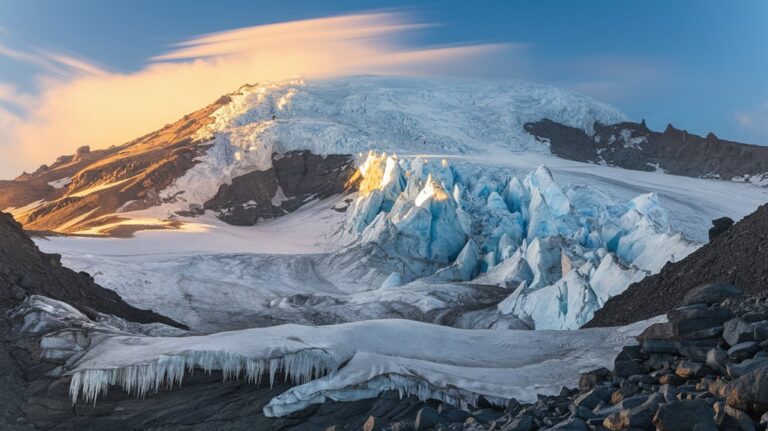Exploding Lakes: The Deadly Phenomenon You Never Knew
You've probably heard of volcanoes, earthquakes, and tsunamis, but there's another natural disaster that's been lurking beneath the surface – quite literally. In certain parts of the world, lakes can transform into deadly weapons, capable of releasing massive clouds of carbon dioxide that can suffocate entire communities within minutes. While these explosive lakes might sound like something from a science fiction movie, they're very real, and they've already claimed thousands of lives.
The Science Behind Nature's Carbonated Time Bombs
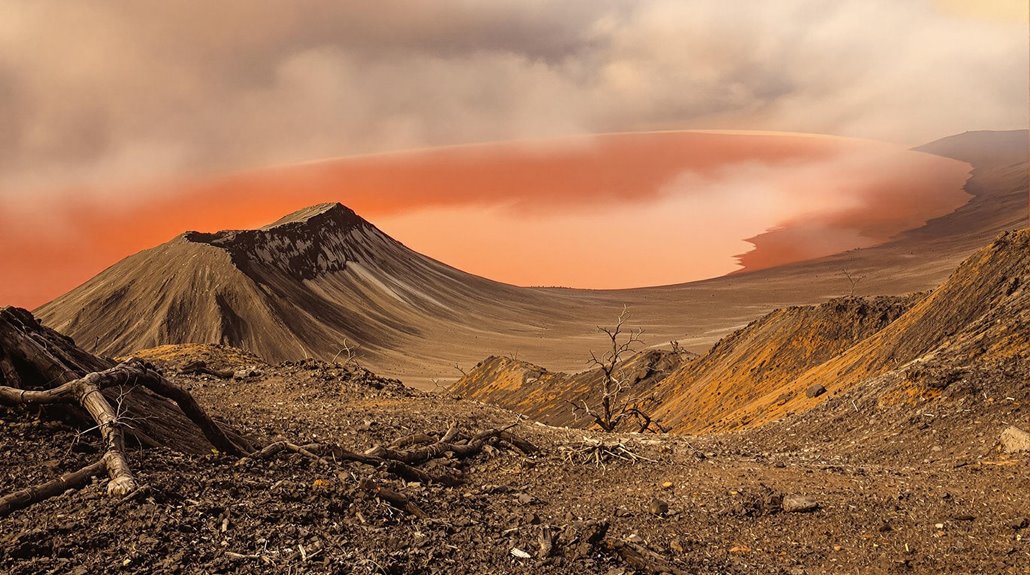
While most lakes peacefully dot Earth's landscape, some harbor a deadly secret beneath their calm surfaces.
These dangerous bodies of water are ticking time bombs due to massive CO2 accumulation in their depths. Just like your favorite carbonated drink, the gas stays dissolved under pressure in the lake's cold bottom layers. Scientists now use a 200-meter tube to continuously degass these dangerous lakes.
You wouldn't notice anything unusual until an eruption trigger, such as a landslide or earthquake, disturbs this delicate balance. When that happens, the CO2 rapidly transforms from liquid to gas, creating expanding bubbles that force the water upward in a violent eruption. The deadliest known incident occurred at Lake Nyos in 1986, claiming around 1,700 lives.
This process requires specific conditions: a deep, stratified lake near volcanic activity, tropical climate preventing natural mixing, and constant CO2 input from underground sources. It's nature's version of shaking a soda can – but with devastating consequences.
History's Deadliest Lake Disasters
Throughout history, several catastrophic lake disasters have demonstrated the lethal power of these natural phenomena.
The most devastating lake eruption occurred at Lake Nyos in 1986, where a massive gas release killed 1,746 people and thousands of livestock as a CO2 cloud swept through villages up to 23 kilometers away. Initial reports described a distant thunder sound before the deadly gas burst into the surrounding air. The eruption's force created a 300-foot fountain of water that shot into the sky.
Just two years earlier, Lake Monoun's eruption claimed 37 lives, marking the first documented limnic eruption and warning scientists about the dangers lurking in volcanic lakes.
While these African disasters stemmed from gas accumulation, North America's Great Lakes Storm of 1913 showed nature's fury in a different way, causing over 250 deaths and destroying 19 ships with 90 mph winds and towering waves.
Today, scientists worry about Lake Kivu, which contains 1,000 times more gas than Nyos and threatens 2 million nearby residents.
Warning Signs and Trigger Mechanisms
Since detecting an impending lake eruption can mean the difference between life and death, scientists have identified several vital warning signs.
You'll want to watch for key warning indicators like unusual lake color changes to deep red or brown, rotten egg smells, and increased gas bubbling at the surface. Dead wildlife and vegetation around the lake are also telltale signs of danger. Scientists found that CO2 concentration increases steadily with depth and time in these dangerous lakes.
Understanding triggering events is equally important. Landslides, volcanic activity, or minor earthquakes can disturb the lake's delicate balance. The Lake Nyos disaster showed how these triggers can release over 80 million m³ of CO₂ into the surrounding area.
Even cool rainwater falling on one side of the lake can initiate a catastrophic gas release. When these factors combine with environmental conditions like deep stratification and minimal mixing, you're facing a potentially deadly situation.
That's why scientists constantly monitor gas concentrations and seismic activity to prevent disasters.
Environmental Effects and Ecosystem Impact
Because exploding lakes release massive amounts of CO2, they create devastating environmental consequences that can persist for years.
You'll find dead zones where wildlife and vegetation have been asphyxiated, while nearby shorelines face erosion from tsunami-like waves. The impact extends far beyond the immediate area, severely testing ecosystem resilience. At Lake Kivu, the potential release of 72 cubic miles of CO2 could devastate the entire region.
The aftermath brings profound changes to both aquatic and terrestrial environments. Scientists estimate that local populations of approximately 2 million people could be impacted by a Lake Kivu eruption.
You'll notice significant biodiversity loss as altered lake chemistry disrupts food chains and destroys habitats. The surrounding landscape transforms as deforestation occurs, soil fertility decreases, and landslide risks increase.
Even local weather patterns change due to the massive gas releases.
What's more concerning is that these effects ripple through the environment, affecting everything from groundwater quality to migratory bird patterns, creating long-lasting changes to the regional ecosystem.
Current Prevention Methods and Safety Measures
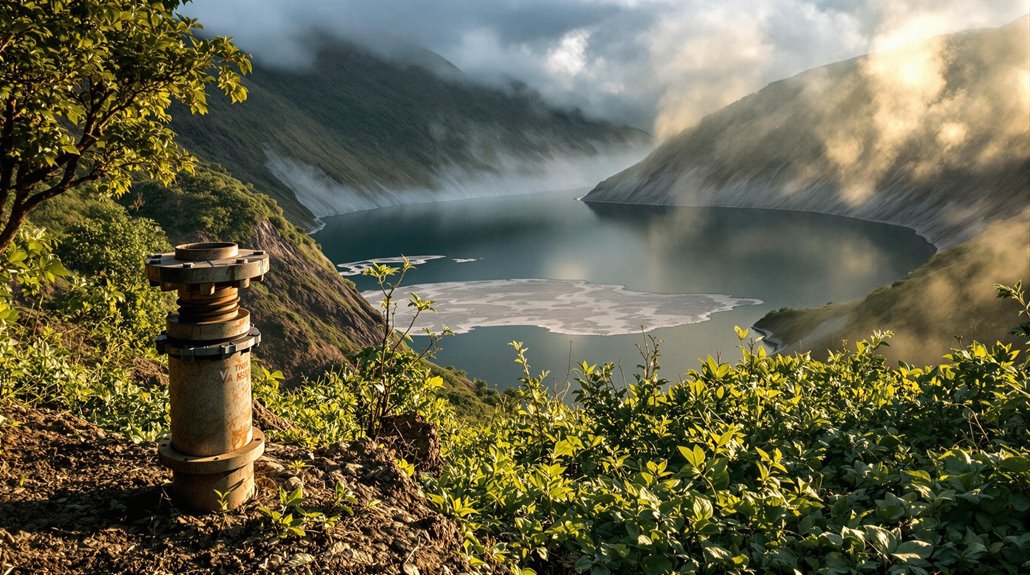
As scientists have learned from past tragedies, preventing lake explosions requires a thorough approach combining technology and human vigilance.
You'll find multiple layers of protection in place today, with emergency protocols designed to protect vulnerable populations.
By 2012, 40% of total gas had been successfully removed from Lake Nyos through ongoing prevention efforts.
The recent color change at Lake Kuk demonstrates the ongoing need for vigilant monitoring of crater lakes.
Here are the key prevention measures that keep communities safe:
- Early warning systems with CO2 detectors, seismic sensors, and automated SMS alerts
- Degassing operations using pipes and fountains to safely release built-up gases
- Dam reinforcement through concrete injection and regular structural assessments
- Community engagement programs including evacuation drills and school education
These extensive safety measures have proven effective, with Lake Monoun successfully degassed by 2009 and Lake Nyos undergoing continuous degassing since 2001.
You'll see warning signs, monitoring stations, and active community preparedness initiatives throughout high-risk areas.
Future Threats and Global Monitoring Efforts
While current safety measures have proven effective for known dangerous lakes, scientists are now turning their attention to other potential threats worldwide.
 Lake Nyos catastrophe that claimed over 1,700 lives in 1986.
Lake Nyos catastrophe that claimed over 1,700 lives in 1986.
You'll see automatic observation buoys transmitting real-time data, while ultrasound probing and satellite imaging help detect early warning signs. Solar-powered equipment has been installed to safely release CO2 from dangerous lakes.
International projects like SATREPS and UNESCO-IHP are bringing together experts from different countries to study these threats.
They're developing thorough simulation models and hazard maps to protect nearby communities and prevent future disasters.

